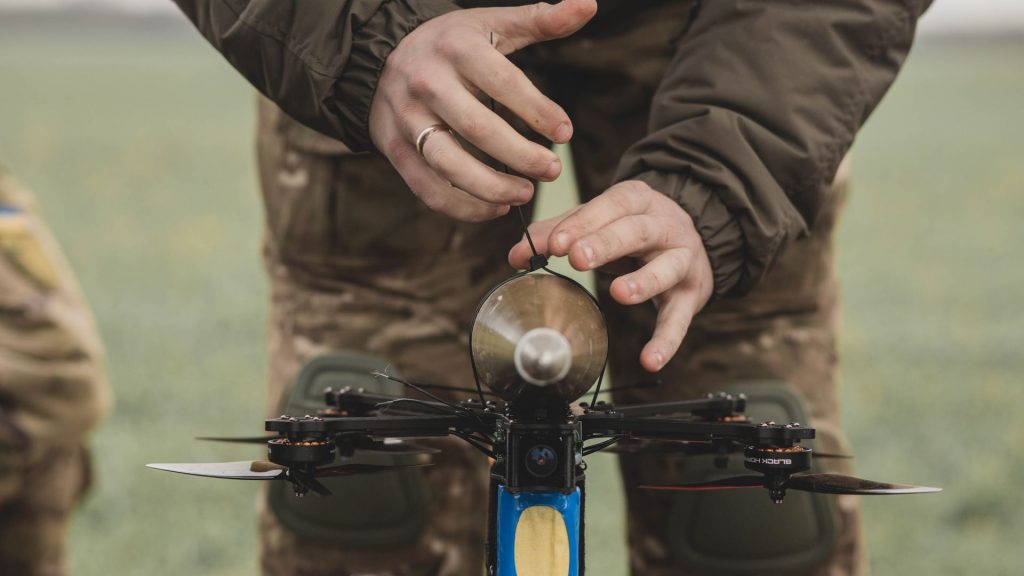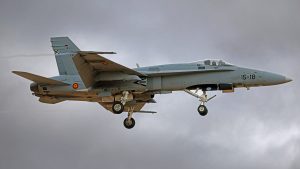Ukraine is making low-cost disposable weaponry the future of warfare

Ukrainian officials briefed United States senators Wednesday on the details of Operation Spiderweb. During the mission, the Ukrainian military destroyed approximately 41 Russian bombers worth $7 billion using drones costing $2,000 a piece when accounting for explosives and other added features.
Straight Arrow News spoke with Sens. Richard Blumenthal, D-Conn. and Andy Kim, D-N.J., who both attended the briefing. They explained what the American military can learn from Ukraine’s operation and what it means for the future of warfare.
“Drones have revolutionized warfare in this century,” Blumenthal stated. “What the American military must learn from Operation Spiderweb is every base is vulnerable to this kind of swarm attack by small, lightweight drones carrying destructive explosives.”
Blumenthal explained that Ukraine is vastly outpacing the United States in drone production. According to Blumenthal, the country is estimated to manufacture 4.5 million drones this year, compared to 100,000 for the U.S.
“We need to be on the offensive. We need to be manufacturing many more drones,” Blumenthal said. “We are no longer at the tip of the spear in terms of UAV or drone warfare, and the American military better get it.”
Kim said Operation Spiderweb exposed American weaknesses. He said the U.S. needs to develop a strategic plan for defending against these types of attacks and come up with ways to utilize the technology.
“I think that this is a real wake-up call, where we need to be thinking about this both in terms of the opportunities, but also the consequences,” Kim said. “I have not seen any type of indication that we have a comprehensive strategy behind this.”
He referred to the drones reported over New Jersey in November and December 2024. No one knew what was happening or what they were seeing. The drones were flying near military bases and were also believed to follow Coast Guard vessels. In January, President Donald Trump said the FAA authorized the drones for research and other reasons and did not belong to a U.S. adversary.
Kim said it’s clear the strategy deployed by Ukraine is going to be a standard form of warfare in the future. He compared the drones to IEDs in Iraq — cheap, homemade bombs were destroying heavily armored and very expensive tanks.
“I think that a lot of warfare is moving more towards disposable weaponry,” Kim said. “The ability on a cost level and damage level is extraordinary. And the problem here is that every country in the world will have this kind of capability, as well as any terrorist organization or any type of organization that seeks to do us harm.”
“I don’t mean to sound an alarm. I’m not trying to tell the American people that we’re under immediate, imminent threat. Definitely not. But we need to be prepared for this change because it is going to be the future of warfare,” Kim continued.
Ukraine proved that drones can be successfully launched for an attack from anywhere. With that in mind, it’s worth remembering that China owns an estimated 380,000 acres of U.S. land in close proximity to 19 military bases around the country.
“I have advocated for some time that we scrutinize and investigate more closely Chinese purchases of property, whether it’s farmland or anything else near our bases,” Blumenthal said. “One of the lessons of Operation Spiderweb is that drones can be transported thousands of miles and then made lethal. So, property anywhere in this country, owned by China, puts us at risk.”
“And second, the technology that China is developing and the amount of drones sold here puts us in grave peril. The vast majority of drones sold in the United States are made in China, potentially a danger of surveillance and even attack,” Blumenthal added.
Thirty-three states have taken action to limit or ban Chinese companies and individuals from purchasing land. Multiple bills have been introduced in Congress, but none have been signed into law.





